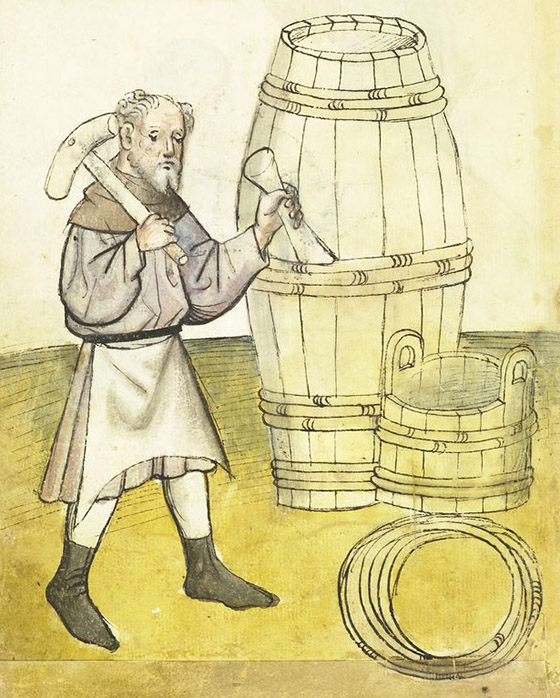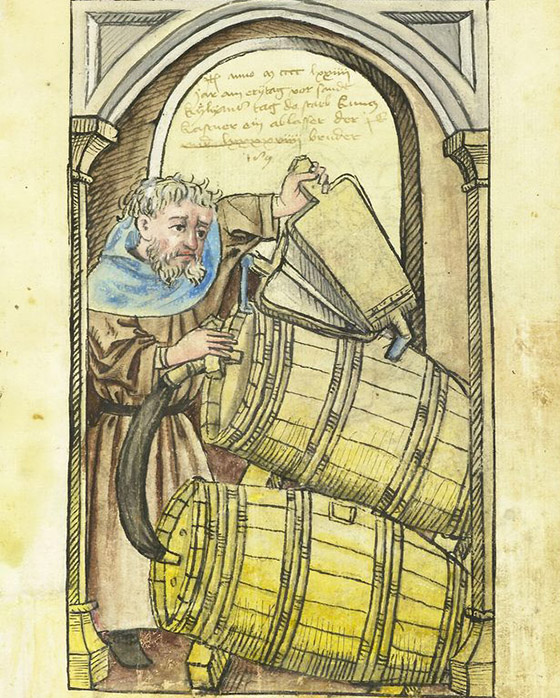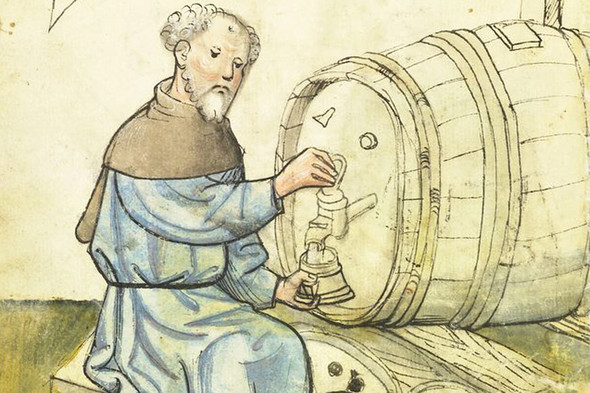You are new here? For the 1st part of this article click here.
I would like to drink, but how?
Who would believe that one of the most important chapters in the history of the barrel is that of the tap? However, it is. Just think about it. You have a barrel, full of wine. Whereas there is no tap to access it. A vicious circle. True, there was the barrel thief, which the Romans were already familiar with and was also made from glass, but this only serves to rescue a small quantity. The tap was certainly already known in the fourteenth century, so we can say that this is the first device on our list which the ancients had not managed to create. Right up to the end of the fifteenth century, the wine was ‘drained’ through a hole drilled in the middle of the bottom of the barrel. The first taps were also located in the middle of the bottom of the barrel and only the end of the sixteenth century saw it move to its current location, thus restoring the world’s order.

Winter hoop – summer hoop
The abovementioned birch or willow hoops were made as follows. The branches were soaked in water and then split in two, and finally one end was cut into a further three pieces. Afterwards these were shaved to the right thickness on the inside half, both ends were intersected into a clip, which after being connected together, was completed with a twig. A split willow twig was twisted around the clip as its final chord. As you can see, this was not child’s play. The master barrel-binders, however, did not only know how to make barrels, but also how to repair them. Contracts from that time recorded precisely the work to be carried out, so we know that barrels had to be furnished with new hoops twice yearly, at first racking and then at the end of spring. These had to had to hold till St Martin’s Day. Any breaks had to be repaired forthwith and any loss of wine incurred had to be made good. In order to mitigate such losses of wine, at the end of the Middle Ages they began to use a barrel hoop with which they could hold the barrel together temporarily until the racking of the wine was complete. The iron hoop appeared first of all around the end of the eighteenth century and was a real rarity to start with. The iron hoop made large barrels with capacities of several hundred litres feasible from this time, although average-sized barrels continued to use a wooden hoop until the eighteenth century. Until the start of the development of the iron industry, the price obviously also delayed the spreading of the iron hoop, as it was five times more expensive than wood. The widespread use of the iron hoop only began in the nineteenth century.

From brewery to wine cellar
For a long time, nothing managed to supersede the initial pine constructions in the market. Strangely, the big breakthrough came amongst the Germans, principally beer-drinkers at that time too, somewhere in the north, next to the Rhine. They were beginning to transport increasing quantities of beer to far-flung lands and needed a solid, densely-grained wood for their barrels. This is how oak appeared and later became dominant. After this, it is hardly a surprise that the first coopers come from these lands to Hungary in 1015. (Just remember, the Bavarian Princess Gizella was the Hungarian King István’s wife! The coopers also stemmed from Bavaria. Perhaps this is no accident.) Coopers had already begun to form themselves into guilds at the beginning of the 1300s, the first guild charter dating from 1376. The guilds of course developed their own master training to teach the traditional systems, there were common songs and dances and they chose St Donat as their patron saint.
You can read more about a liquid history of barrels in the third part of this article.






